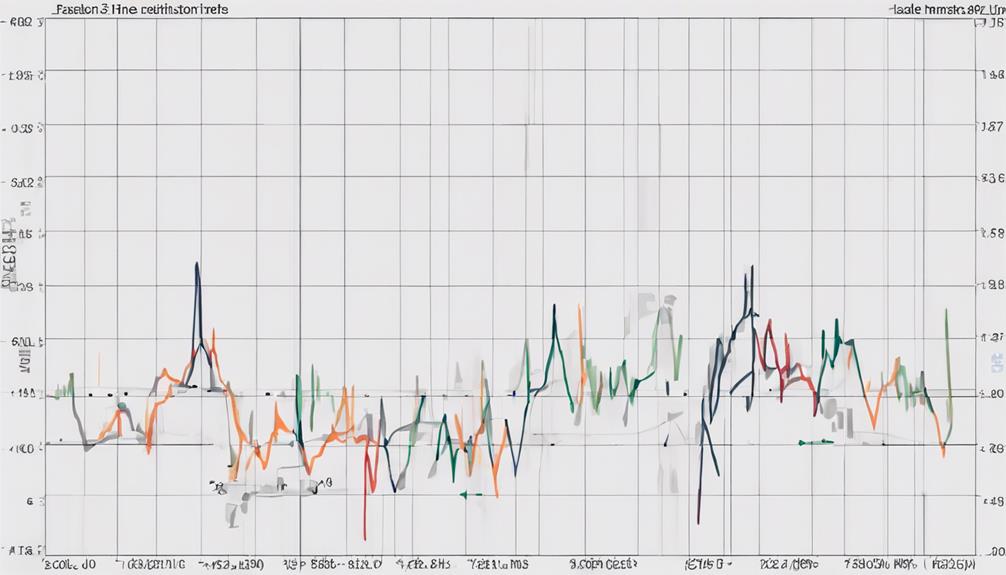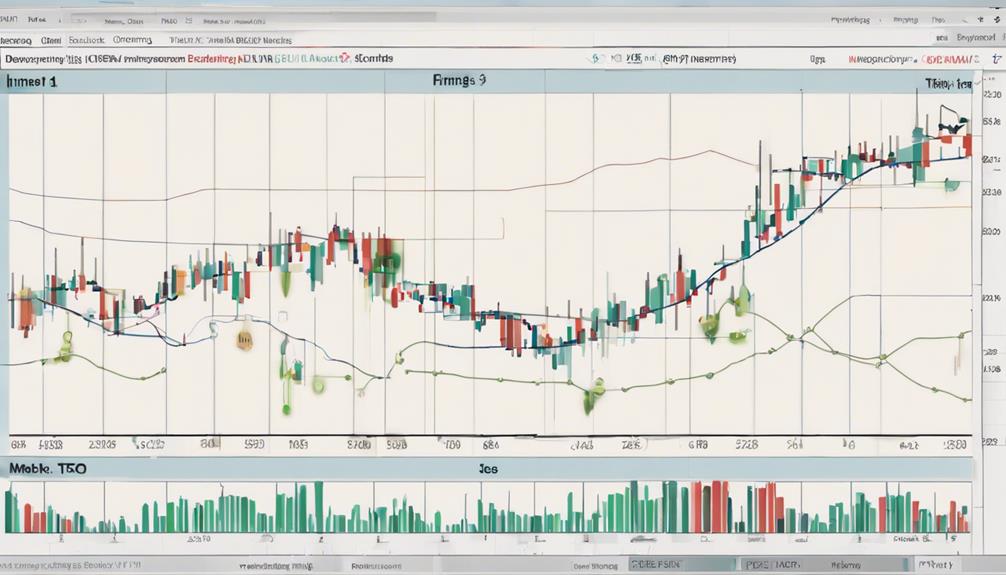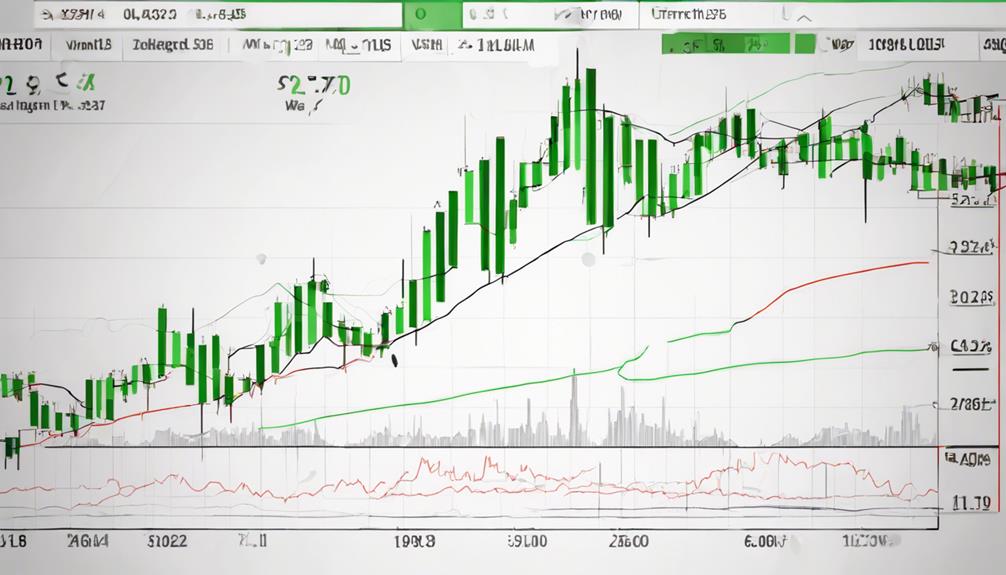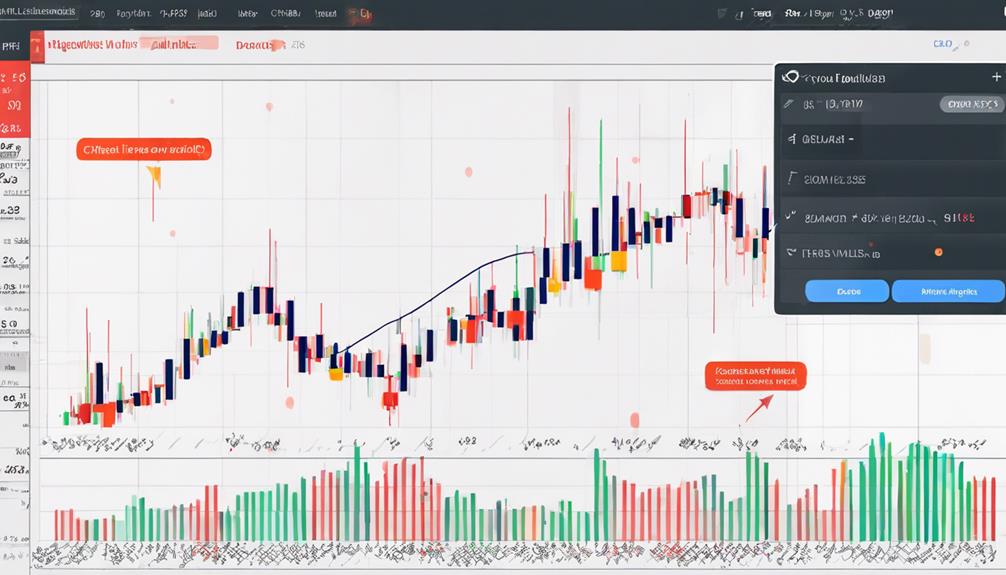The ability of the CMF indicator to anticipate bullish and bearish market conditions stems from its unique method of evaluating the flow of capital in and out of an asset, providing traders with valuable insights into market sentiment.
By dissecting the nuances of money flow trends and translating them into actionable data, the CMF offers a strategic advantage in navigating volatile markets.
However, the real intrigue lies in how this indicator not only identifies potential market shifts but also assists in pinpointing optimal entry and exit points for traders seeking to capitalize on these fluctuations.
Mechanics of CMF Indicator
The functionality of the CMF indicator hinges on its intricate analysis of buying and selling pressure derived from the accumulation/distribution Line (ADL). This indicator, also known as the Chaikin Money Flow, is crucial in determining market sentiment by evaluating the flow of money into or out of a security. Positive CMF values indicate a bullish market sentiment, signaling higher buying pressure, while negative values suggest a bearish sentiment with increased selling pressure. By tracking the CMF, traders can anticipate potential trends and make informed decisions based on the prevailing market sentiment.
The CMF indicator serves as a valuable tool for traders seeking to gauge the strength of buying or selling pressure within the market. Analyzing the CMF allows for a deeper understanding of the dynamics influencing market trends. By closely monitoring the CMF values, traders can gain insights into the direction in which the market may move, enabling them to adapt their strategies accordingly to capitalize on emerging opportunities.
Analyzing Money Flow Trends

Analyzing trends in money flow provides a valuable insight into market sentiment and potential price movements, offering traders a strategic advantage in decision-making. The Chaikin Money Flow (CMF) indicator is particularly useful in this regard. Positive CMF values indicate an accumulation of assets, reflecting buying pressure in the market, while negative values signal distribution of assets, implying selling pressure and potential bearish trends.
By examining money flow persistency, traders can gauge the strength of buying or selling pressure and anticipate market direction. CMF's analysis of the volume and price relationship further enhances its predictive power, helping traders identify bullish trends characterized by increasing buying pressure or bearish trends marked by growing selling pressure.
Monitoring CMF trends enables traders to stay ahead of market sentiment shifts and anticipate potential price movements, empowering them to make informed decisions in dynamic market conditions.
Predicting Market Movements

Utilizing the CMF indicator's analysis of money flow trends allows traders to effectively predict market movements based on buying and selling pressure signals.
The CMF indicator predicts bullish markets when it registers positive values, reflecting buying pressure, while negative values indicate bearish markets driven by selling pressure.
This prediction mechanism is rooted in the analysis of money flow within a security over a specified period, offering insights into the market's direction.
By scrutinizing price and volume data, the CMF indicator identifies trends, empowering traders to anticipate potential market shifts accurately.
Armed with this information, traders can make informed decisions regarding their positions based on the prevailing buying or selling pressure signals.
The CMF's ability to forecast market movements provides traders with a strategic advantage, enabling them to navigate the dynamic landscape of financial markets with greater precision and confidence.
Understanding Bullish Signals

Upon examination of positive CMF values, a clear indication of strong buying pressure emerges, underlining a prevailing bullish sentiment in the market. To better understand bullish signals derived from the CMF indicator, consider the following:
- Positive CMF values indicate a higher volume of buying activities, suggesting an optimistic outlook among investors and traders.
- The accumulation of assets with positive CMF values often paves the way for upward price movements, marking the onset of a bullish market trend.
- Bullish signals from the CMF indicator are reinforced by rising prices, reflecting the alignment between CMF readings and market movements.
- Traders seek sustained positive CMF values to validate bullish market conditions, providing a basis for considering long positions and anticipating further price appreciation.
The CMF's emphasis on money flow volume and the prevalence of buying activities underscores its role in forecasting bullish markets. By interpreting positive CMF values alongside price trends, market participants can gain insights into potential opportunities for capitalizing on upward market momentum.
Recognizing Bearish Trends

Recognizing bearish trends becomes crucial in the financial markets when the CMF indicator displays negative values, signaling a shift towards selling pressure and potential downward movements in asset prices.
Bearish markets are identified through CMF values consistently below the zero line, indicating sustained selling pressure. A decrease in CMF values suggests waning buying interest, potentially leading to a decline in asset prices.
Confirmation of bearish trends occurs when the CMF diverges from the price trend, hinting at a possible trend reversal in the market. Traders rely on the CMF indicator to detect bearish signals early, enabling them to plan exit strategies and manage risks effectively during market downturns.
:How Does the CMF Indicator Work in Predicting Bullish and Bearish Markets Across Different Markets?
The CMF indicator in cryptocurrency is a valuable tool for predicting bullish and bearish markets across different markets. By analyzing the flow of money in and out of an asset, this indicator can help traders make informed decisions about when to buy or sell, based on the strength of market momentum.
Frequently Asked Questions
How Does CMF Indicator Work?
The CMF indicator operates by analyzing the flow of money into or out of a security, based on volume and price data. Positive values above zero signal buying pressure and accumulation, while negative values below zero indicate selling pressure and distribution.
What Is the CMF Strategy in Trading?
The CMF strategy in trading utilizes the Chaikin Money Flow indicator to gauge buying and selling pressure. Traders leverage positive CMF values for bullish market signals and negative values for bearish trends, aiding in trend confirmation and entry/exit point identification.
Is CMF a Good Indicator?
CMF stands as a reliable indicator due to its ability to gauge the flow of money into or out of a security, providing valuable insights into market sentiment. Traders utilize CMF in conjunction with other tools for informed decision-making.
What Is the Difference Between CMF and Obv?
In comparing CMF and OBV, CMF assesses money flow through price and volume data, indicating buying or selling pressure with a range of -1 to +1. In contrast, OBV focuses solely on volume changes to confirm price trends.
Conclusion
In conclusion, the Chaikin Money Flow (CMF) indicator serves as a powerful tool in predicting market trends by analyzing the flow of money into or out of a security.
By deciphering buying and selling pressures, the CMF offers valuable insights into market sentiment and potential movements.
Like a skilled navigator guiding a ship through turbulent waters, the CMF helps traders steer their way through the complexities of the market, making informed decisions based on data-driven analysis.
